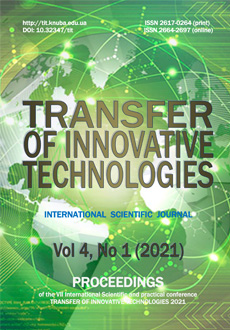Construction diploma design on VIM-technology
DOI:
https://doi.org/10.32347/tit2141.0107Keywords:
information technologies, diploma design, evaluation of economic efficiencyAbstract
The development of the construction industry of Ukraine as a basis for economic transformations through the introduction of information technology (IT), put forward appropriate requirements for specialists. There is a need at the state level to solve the problem of need and development in the labor market of competencies of specialists for the construction industry in the implementation of VIM technologies, creating a single information model in the construction of Ukraine, which would combine architectural, design, engineering, cost, ecological components with access to cost-effective decision-making for the life cycle of the object and, accordingly, the introduction of innovative technologies in the education and training of competent professionals.
References
Концепція застосування будівельного інформаційного моделювання в управлінні вартістю життєвого циклу державних об’єктів (2019) (Проект) .К.: НАДУ, 25.
Поддубни Андре, Афанасьєв Дмитро та інші. (2019) Концепція впровадження ВІМ – Будівельного Інформаційного Моделювання в Україні. Проект міжнародної технічної допомоги ЄС «Допомога організації влади України в удосконаленні менеджменту циклом інфраструктурного проекту» (НТУУ «КПІ»)
Дружинін А.В. (2019) Методичні вказівки до виконання дипломного проекту магістра (по кафедрі організації будівельного виробництва). Харків: ХНУБА, 25.
Колектив авторів (2018) Методичні вказівки до виконання дипломного проекту магістра для студентів за освітньо-професійною програмою спеціальності 192 «Будівництво та цивільна інженерія». Харків: ХНУБА, 30.
Дружинін А. В., Жилякова Г. С. (2019) Організація кошторисної справи в будівництві. Харків: ХНУБА, 60.
Downloads
Published
How to Cite
Issue
Section
License

This work is licensed under a Creative Commons Attribution-NonCommercial-NoDerivatives 4.0 International License.
Our journal abides by the CREATIVE COMMONS copyright rights and permissions for open access journals.
Authors, who are published in this journal, agree to the following conditions:
1. The authors reserve the right to authorship of the work and pass the first publication right of this work to the journal under the terms of a Creative Commons Attribution License, which allows others to freely distribute the published research with the obligatory reference to the authors of the original work and the first publication of the work in this journal.
2. The authors have the right to conclude separate supplement agreements that relate to non-exclusive work distribution in the form in which it has been published by the journal (for example, to upload the work to the online storage of the journal or publish it as part of a monograph), provided that the reference to the first publication of the work in this journal is included.




